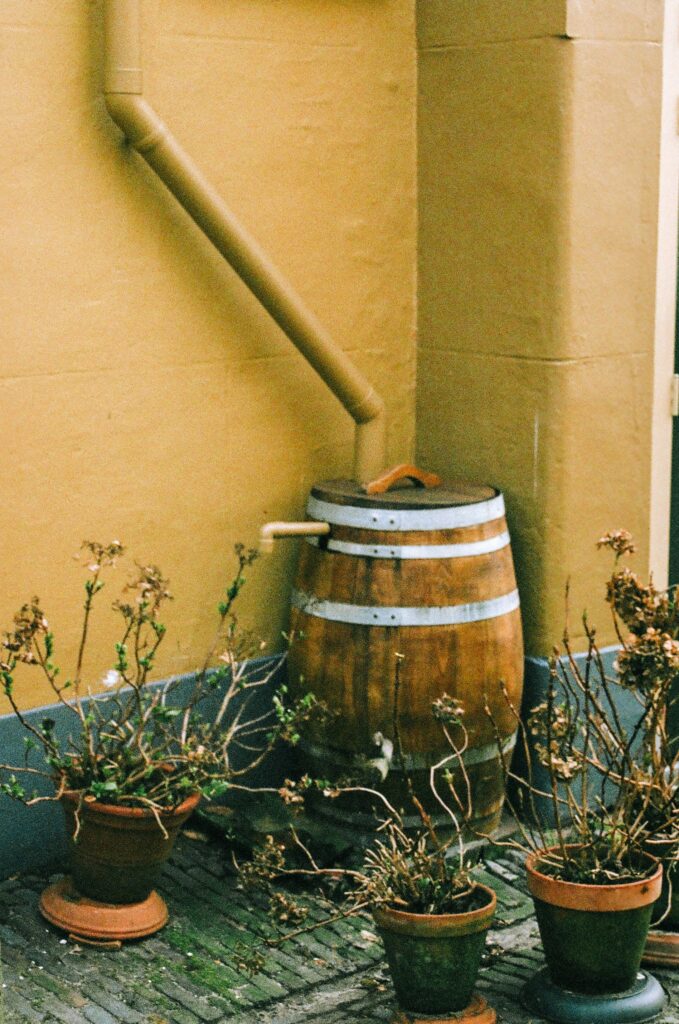If you’ve ever thought about building a rainwater harvesting system at home, you’re in the right place. Whether you’re looking to cut your water bill, prep for emergencies, or just use what nature gives you, collecting rainwater is a smart and surprisingly simple solution.
You don’t need to be off-grid or own a homestead to do this. A basic DIY rainwater harvesting system is doable for just about anyone with a roof, a gutter, and a weekend afternoon.
Why Start a Rainwater Harvesting System?
Every time it rains, gallons of water pour off your roof and disappear into the ground. A simple rainwater collection system lets you capture some of that free resource and put it to good use—like watering your garden, washing tools, or saving it for emergencies.
It’s not just about prepping either. For eco-conscious homeowners, harvesting rainwater is a great way to reduce your environmental footprint.

What You’ll Need to Get Started
You can build your own home rainwater harvesting system with just a few basic components:
- A rain barrel or IBC tote (food-grade plastic is best)
- A downspout diverter to channel water from your roof
- A screen or mesh cover to keep out debris and mosquitoes
- A spigot or hose bib at the bottom of the barrel
- A level surface like concrete blocks or a wood platform
Optional but useful add-ons include a first flush diverter, water filter, and overflow pipe. These can help improve the quality of the water and protect your system from overfilling.
Choosing the Right Spot
Look for a section of your roof that catches a lot of water and has a downspout you can cut into. You want your rainwater catchment system to be close to the garden (if that’s your main use) and elevated a bit to give you some natural water pressure when you open the spigot.
Setting Up Your Rainwater Harvesting System
First, cut your downspout a few inches above the top of your rain barrel. Attach the diverter and run a hose into the barrel’s lid. Make sure the top is covered with mesh to keep out bugs and leaves.
Install the spigot near the bottom. You can use it to fill watering cans, or attach a hose if the barrel is raised. If you need more capacity, you can connect multiple barrels together with PVC pipe or flexible tubing.
If you’re using a lid, make sure it’s secure and screened to prevent animals or insects from getting in. A good lid also keeps the water cleaner for longer storage.
Tips for Safe and Smart Water Use
Rainwater collected from your roof is not safe to drink unless it’s properly filtered and treated. But it’s great for irrigation, cleaning tools, or flushing toilets.
Don’t forget to include an overflow outlet. During a big storm, your barrel can fill up fast, and you don’t want water backing up near your foundation.
And if you live somewhere with freezing winters, drain the system before the first hard freeze. Ice can crack your barrel or damage the fittings.
Expand as You Go
The beauty of a simple DIY rainwater harvesting system is that it’s modular. Start with one barrel. If you like it, scale up. Add a filter. Set up a solar-powered pump. You can even tie it into a greywater system down the line.
It’s one of those projects that’s both practical and oddly satisfying. You’ll be surprised how quickly you start relying on your stored rainwater—and how good it feels to make use of something that used to just go to waste.


